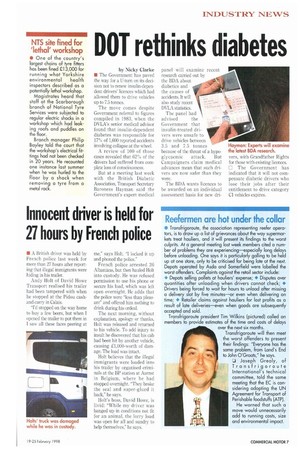DOT rethinks diabetes
Page 9

If you've noticed an error in this article please click here to report it so we can fix it.
by Nicky Clarke • The Government has paved the way for a U-turn on its decision not to renew insulin-dependent drivers' licences which had allowed them to drive vehicles up to 7.5 tonnes.
The move comes despite Government referral to figures compiled in 1983. when the DVLA's senior medical advisor found that insulin-dependent diabetes was responsible for 17% of 1,600 reported accidents involving collapse at the wheel.
A review of 100 of those cases revealed that 62% of the drivers had suffered from complete loss of consciousness.
But at a meeting last week with the British Diabetic Association, Transport Secretary Baroness Hayman said the Government's expert medical panel will examine recent research carried out by the BDA about diabetics and the causes of accidents. It will also study recent DVLA statistics.
The panel had advised the Government that insulin-treated drivers were unsafe to drive vehicles between 3.5 and 7.5 tonnes because of the threat of a hypoglycaemic attack. But Campaigners claim medical advances mean that such drivers are now safer than they were.
The BDA wants licences to be awarded on an individual assessment basis for new dri
Hayman: Experts will examine the latest BDA research.
vers, with Grandfather Rights for those with existing licences. C The Government has indicated that it will not compensate diabetic drivers who lose their jobs after their entitlement to drive category Cl vehicles expires.




































































































